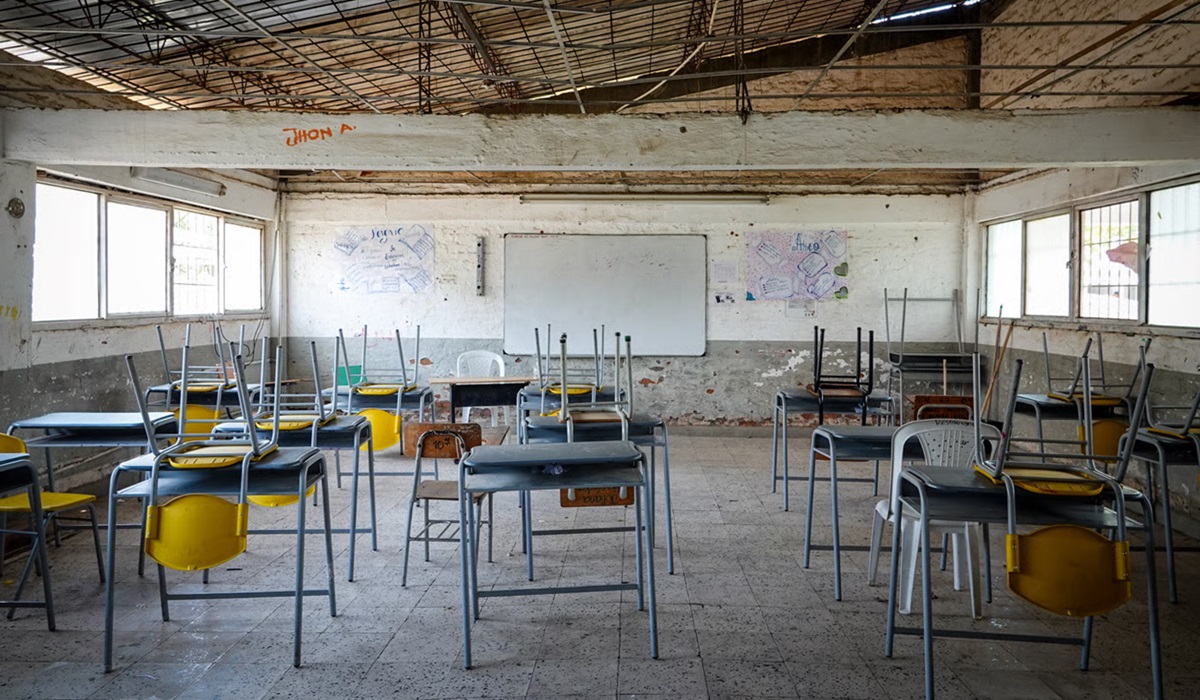Colombia Faces Alarming Surge in Attacks on Education: One Every Three Days
- Naomi Dela Cruz
- Trending News
- Latin
- July 31, 2025

In the first six months of 2025, Colombia has witnessed a disturbing escalation in violence against its educational system, with the Norwegian Refugee Council (NRC) reporting 52 attacks on schools and related infrastructure—an average of one every three days. The violence is concentrated in six departments where the NRC operates: Antioquia, Cauca, Chocó, Norte de Santander, Putumayo, and Valle del Cauca.
These attacks, which include armed confrontations, the military use of school buildings, the presence of landmines, and the forced recruitment of children, have affected nearly 9,500 individuals, including students, teachers, and school staff. This marks a more than 65 percent increase in those affected compared to the same period in 2024.
The NRC is calling for immediate and reinforced action from Colombian state institutions and the international community to reverse this alarming trend. “School workers and students affected by the armed conflict are sending an unequivocal message: all parties, including state security forces, must honour their responsibility to respect educational facilities and protect children from harm,” said Giovanni Rizzo, NRC’s Country Director in Colombia.
While the number of attacks slightly decreased from 59 in the first half of 2024 to 52 this year, the severity and reach of the violence have worsened. Attacks are increasingly occurring directly within school compounds. In 2024, about half of the incidents took place inside schools; in 2025, that figure rose to 61 percent, with the remaining 39 percent happening on the routes leading to school. The change in pattern means more students and education workers are directly caught in the violence.
This new reality has created palpable fear and long-term consequences for communities. “An armed group occupied our school, and the teachers ordered everyone to evacuate. It was used as a combat base and, when they left, we could see bullet holes in the walls. The teachers had to collect unexploded ordnance, and now the community fears that explosive devices are still present at the back of the school grounds,” recounted a parent from western Colombia.
Beyond the trauma, such events interrupt education, endanger lives, and erode the stability and protective role that schools play—particularly in conflict-affected regions.
Despite the mounting danger, Colombia’s institutional response remains inadequate. Only 10 percent of reported attacks have received a timely or effective official response. The NRC is urging the Colombian government to immediately scale up measures to safeguard children and educators. Key recommendations include:
- Enhancing protection against forced recruitment of children
- Conducting thorough humanitarian demining around schools
- Strengthening school infrastructure to prevent military use or occupation
- Increasing the presence of civil protection agencies in high-risk areas
“It is unacceptable that armed actors are showing less respect for schools and putting students’ lives at greater risk,” said Rizzo. “All armed actors must listen to the civilian population, especially the children caught in the crossfire in their own classrooms.”
The NRC’s data is not a comprehensive national survey but focuses on regions where the organization is active. Even within this limited scope, the statistics are troubling. Since 2022, more than 56,500 students, teachers, and school staff have been affected by attacks on education in NRC-monitored areas.
While the number of individual attacks declined slightly this year, the concentration and intensity of violence within schools have dramatically increased the number of people affected. These findings are deeply concerning for communities already facing chronic violence and displacement.
The Safe Schools Declaration—an international commitment launched in 2015 by Norway and Argentina—underlines the importance of safeguarding education during armed conflict. Colombia is a signatory, but the rising number of incidents suggests more robust implementation is urgently needed.
When children are forced out of school, they become more vulnerable to recruitment by armed groups, child labour, and exploitation. Education is not just a right; in conflict zones, it is a lifeline.
“Children and civilians are innocent victims of a conflict that is not theirs. The attacks on education must end now; it is a call we will not stop making,” Rizzo concluded.
As Colombia seeks to build a lasting peace, protecting schools must be a top priority. Without safe classrooms, the future of an entire generation is at risk.








